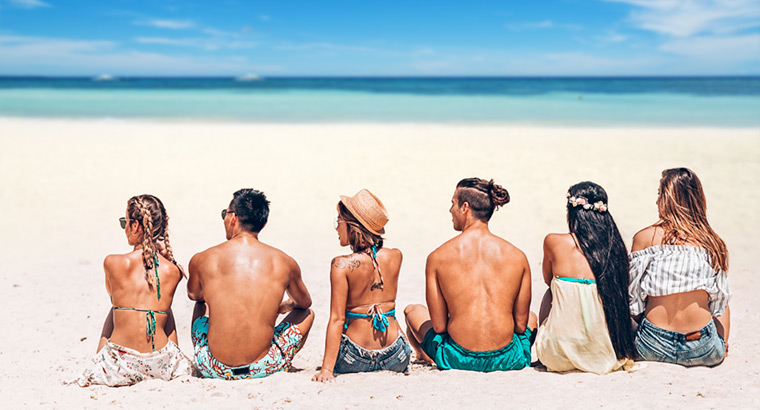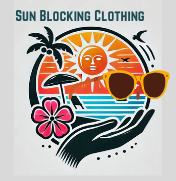Teens and tanning facts are shared to help you and your teens shed some false information.

Teens and tanning facts will give you a head start in helping your teens protect their skin. Help you and your teens understand how to protect their skin while still enjoying time in the sun with friends and family.
After a few minutes in the sun with sunscreen, you should put on your sunglasses and sun hat. If 20 or so minutes is less time than you want to spend in the sun, make a few quick changes, and be ready to hang out longer. A loose-fitting long-sleeve sun blocking shirt is all you need to enjoy more time on the beach during the heat of the day.
Start your tanning day by applying a wide spectrum sunscreen with an SPF of at least 30 to your body, from your face to your feet. Every bit of your skin not covered by clothing needs sunscreen to stay safe.
After your safe time, add the sunglasses, sun hat, and sun blocking shirt. Your skin should be protected from sunburn if you use these guidelines.
Do you know what your safe time is? If you choose to get outside in the sun in the early mornings, or late afternoons, you can stay out longer and stay safe from the sun. It is the hot most direct sun that is the most dangerous, from 10 AM until 4 PM.
Is There A Limit For How Dark Your Tan Will Get?
When your skin is exposed to Ultra Violet rays, your body gets busy and starts producing melanin. This is the tan color of your skin.
Tanning is a result of the type of skin you have and how much melanin your body can produce. People with darker skin tones have more melanin than people like me with fairer skin tones. They will continue to produce melanin and get browner, I will turn red and start sunburning.
This leads us to the fact that when your body produces melanin, it will usually cut off this production after about 2 1/2 hours or so hours. When your body has reached the quota for the day, any extra time in the sun will not tan you. You will be damaging your skin by not covering your skin and protecting it.
If you adjust your schedule to be out in the sun to later in the day, you can stay out longer and be safe. It is truly the hotter time of the day that is so dangerous. You can tan later in the day. Your skin may be slower to tan when the tan is less direct, but it is also safer for you to be out.
Once your body had produced all the melanin it is going to for this day, you will be headed for sunburn quicker. Sunburn will ruin your weekend, or vacation quicker than anything you can do.
Teens Should Protect Their Skin After A Safe Tanning Time
A reasonable action for your teen is to put on their sun blocking clothing and protect their skin while still having fun in the sun. If your teen were working out for a team sport, they would comply with the rules of the sport to get the best result.
So this same teen can understand that getting a tan has some rules. Limiting the time they spend in the direct sun is an important rule for a lifetime of healthy skin. With so many choices of sun blocking clothing, there are many choices for your teens.
UPF clothing is a great addition to their wardrobe. Fortunately, the clothing manufacturing companies who make these sun blocking clothing lines know that teens love hoodies. They make many styles for them in many colors. Finding one for your teen will get you started in clothing to cover and protect their skin.
With these hoodies, teens have protection to pull up over their heads, protecting their ears and necks as well as their trunks and arms. There are many styles with long sleeves and finger holes at the end of the sleeve to put fingers through. This protects the backs of their hands better.
If a hoodie is not your teen’s preference, a sun hat, sunglasses, and a long-sleeve loose-fitting tightly woven shirt will keep them comfortable and protected.
It is easier to keep sunscreen applications on less of your body. If your teen will choose safer times of the day for being out in the sun, they will stay safer.
The tradition of tanning at the hottest time of the day is a dangerous one. Helping your teen to understand that they can make better choices and have fewer skin cancer worries is worth the effort.
How Long Should I Tan Each Day
Remember that everyone has a melanin cut-off point, which is usually 2 to 3 hours. Your teen is no exception. After this cut-off point of melanin production, your skin will not get darker during that day.
If your teens tan past the safe time according to their personal skin risk, your teen will be putting their skin in harm’s way. If your teen is a risk for sunburn, you will be sunburned if you try to stay out in the direct sun time for the full time you will produce melanin. Exposing your skin, even with sunscreen is dangerous.
Pay attention to how your teen’s skin reacts. Help your teens realize they can control the sun that their skin is exposed to. Being outside with their peers is important to teens in general. Getting involved in sports often increases exposure to the sun.
Help your teen think about how he/she can prepare to protect their skin. Share suggestions about how to make their sun exposure safer.
The more information they have, the better your teen can protect themselves. Remind them that they need to stay hydrated when in the sun, whether late or early. Staying hydrated allows your skin to make more melanin. Taking breaks in the shade is important as well.
Give your skin a chance to stay healthy.
Why Do I Tan So Quickly, My Friend Doesn’t
One reason you may tan quicker is the altitude where you are tanning.
The sun’s rays are stronger at higher altitudes. This can make tanning, as well as sunburning, happen more quickly. People with darker skin will tan faster because they have more melanin in their skin.
This may be what makes them tan faster. Exposing your skin to the sun triggers cells called melanocytes to produce melanin, which makes the skin darker.
So if you find that you tan faster than others? That means that you probably have larger and more melanocytes than slower tanners. These cells produce melanin based on the amount of UV radiation that you get. They are responsible for the production of melanin.
Your DNA controls the size and amount of your melanocytes and the melanin that is produced. This is why some people don’t tan as easily as others.
Your Teen And SPF’s Effect On Tanning Time
When your teen questions using a wide spectrum of 30 SPF, help them understand what has been recently discovered. Scientists have only recently realized that by limiting tanning to every other day, skin tans faster.

Sunscreen maker Tropic Skincare products shares this information. The idea behind this finding is that our skin has limited resources. These resources can heal a sunburn or help you tan
Yes SPF could delay your tanning time. However, it’s much more likely to help you tan quicker by allowing your skin to divert all its energy into melanogenesis (the generation of melanin pigment which gives your skin its color). Keeping your skin moisturized will speed the process as well.
When trying to help your teens get a tan, and still maintain maximum health for their skin, you may find your patience frayed. Teens are not always willing to walk a different path from their peers.
When your teen has high-risk skin tones, it is hard to always find a way to answer their questions in a manner that gets their attention.
Hang in there and continue to educate yourself. Be aware of the signs of your teen using tanning beds. Pay attention to their friends. Is anyone looking like they are getting a tan, really fast? Don’t ignore what is right before you.
How Long Does It Take For A Tan To Show Up?
Generally, people will show some tan within 1 to 2 hours of total time in the sun. With sunscreen, two 30-minute sessions in the sun would be an hour of total time. Don’t forget the safe time for you to be in the sun. By applying sunscreen you can stay long enough to tan without burning.
It’s important to remember that both burns and tans may take a while to show up on your skin. So if you don’t see color immediately, it doesn’t mean you’re not getting any color or should use lower SPF.
Any type of tanning has risks, including skin cancer.

Sami’s Take On Teens and Tanning Facts Impossible Combination
Being the parent of teens just a few years ago, I can appreciate that the blessings outweigh the challenges. Having spent many vacations camping by a lake, swimming, waterskiing, and fishing, we did see a good bit of sun.
I have said many times before that I was not aware of the issues for my kids with so much early sun exposure. They are among the many young adults with skin cancer.
The three of them have had many skin cancers, and will probably have many more. My heart grieves, knowing that we just didn’t know the results of our fun family times.
Science is proving that the early exposure when they were young has added to their skin issues. They will take risks through the years, as my kids did. Risks that no blonde and strawberry blonde fair skinned green and blue-eyed teens should.
Hopefully educating them about the dangers. As well as offering suggestions for safer times to be out. Not to forget the sunblocking clothing that is now available, your teens will be safer.
SkinCancer.org offers lots more suggestions for staying safe from the sun.
